
Top 10 Upcoming Green Hydrogen Projects in Germany (2025)
Table of Contents
The German government introduced Energiewende - Germany’s energy transition plan to achieve climate neutrality by 2050. In line with this plan, Germany strives to achieve 111,673 MW installed electrolysis capacity and 3,128 kilotons of green hydrogen production annually by 2030. Currently, the government is meeting about 22.5% of the domestic energy production through renewable green hydrogen.
To further expand Germany’s green hydrogen market and implement green hydrogen across several sectors, the German government has recently launched several large green hydrogen projects such as Green Wilhelmshaven, HydrOxy Hub Walsum Project and many more. In this blog we will cover a list of upcoming green hydrogen projects in Germany.
Top 10 Upcoming Green Hydrogen Projects in Germany (Based on Electrolyzer Capacity)
Project | Electrolyzer Capacity | Developer | Project Cost | Commissioning Year |
FFI and TES's Wilhelmshaven Green Hydrogen Production Plant | 1730 MW (estimate) | Fortescue Future Industries (FFI) and Tree Energy Solutions (TES) | USD 2,800 million (estimate) | Yet to be Confirmed |
Green Wilhelmshaven Project | 1 000 MW | Uniper | Contact Us | 2028 |
H2APEX's Lubmin Green Hydrogen Production Plant | 1,000 MW | H2APEX | USD 2,000 million | Yet to be Confirmed |
Lhyfe's Lubmin Green Hydrogen Production Plant | 800 MW | Lhyfe | USD 1,600 million (estimate) | Yet to be Confirmed |
HydrOxy Hub Walsum Project | 520 MW | Iqony | Contact Us | 2031 |
TES Green Energy Hub | 500 MW | TES and EWE | USD 163.8 million | 2028 |
Steag's Duisburg Green Hydrogen Production Plant | 500 MW | STEAG and ThyssenKrupp | USD 1,000 million (estimate) | Yet to be Confirmed |
Deutsche ReGas's H2-Hub Lubmin Plant | 500 MW | Deutsche ReGas | USD 1,000 million (estimate) | 2028 |
GET H2 Nukleus Project | 300 MW | BP p.l.c, Evonik, Nowega, OGE and RWE | USD 575.64 million. | 2027 |
BP p.l.c’s Lingen Green Hydrogen Project | 100 MW | BP p.l.c | Contact Us | Yet to be Confirmed |
40+ reviews
Find the Latest Green Hydrogen Projects Across Germany
Gain exclusive access to our industry-leading database of green hydrogen project opportunities with detailed project timelines and stakeholder information.
Collect Your Free Leads Here!
No credit cardUp-to-date coverage
Joined by 750+ industry professionals last month
FFI and TES's Wilhelmshaven Green Hydrogen Production Plant
FFI and TES's Wilhelmshaven Green Hydrogen Production Plant | 1,730 MW (estimate) |
Project Developer | Fortescue Future Industries (FFI) and Tree Energy Solutions (TES) |
Green Hydrogen Produced | 300,000 metric tons annually |
Fortescue Future Industries (FFI) and Tree Energy Solutions (TES) are developing one of the largest green hydrogen projects in Europe. The project is planned with an estimated capacity of 1,730 MW that will supply 300,000 TPA. The project is being built in Voslapper Groden Nord in Wilhelmshaven on an area of around 145 hectares.
This project is currently in the planning stage and is being developed by the joint partnership at an estimated project cost of USD 2,800 million. The plant is planned to serve as an import terminal for green energy, including e-NG (e-methane produced from green hydrogen) that can be converted into hydrogen on-site or can be fed directly into the natural gas grid.
Its location is such that it connects the facility to the European natural gas network, the H2ercules hydrogen network, and the CO2 transport network of OGE. The first delivery of hydrogen to the terminal is expected by 2026.
Green Wilhelmshaven Project
Green Wilhelmshaven Project | 1 GW |
Project Developer | Uniper |
Green Hydrogen Produced | 300,000 metric tons annually |
The green hydrogen produced here will be converted to green ammonia that will be further exported through a shipping terminal and rail transport. A part of the green ammonia will be converted to hydrogen and fed into the German nuclear grid. This project will include a hydrogen pipeline construction and an Etzel salt carven for storage.
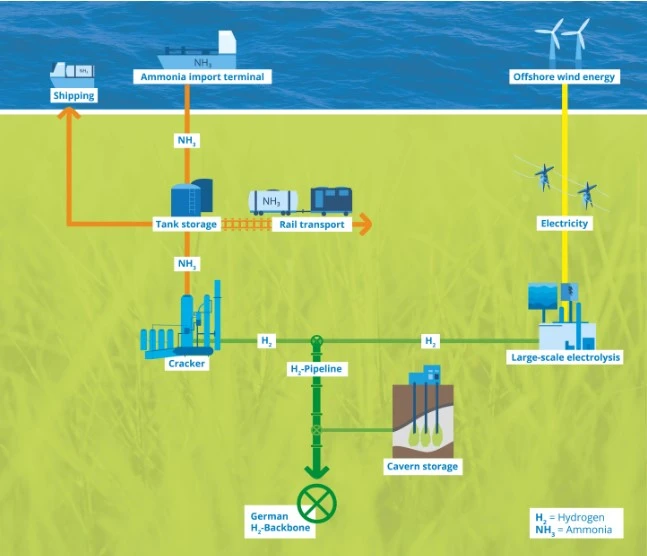
The hydrogen pipeline constructed will be integrated into the existing European Hydrogen Network. Apart from the conversion of green hydrogen to ammonia, German industrial clusters like Lower Saxony, North Rhine Westphalia will get future access to the green hydrogen produced.
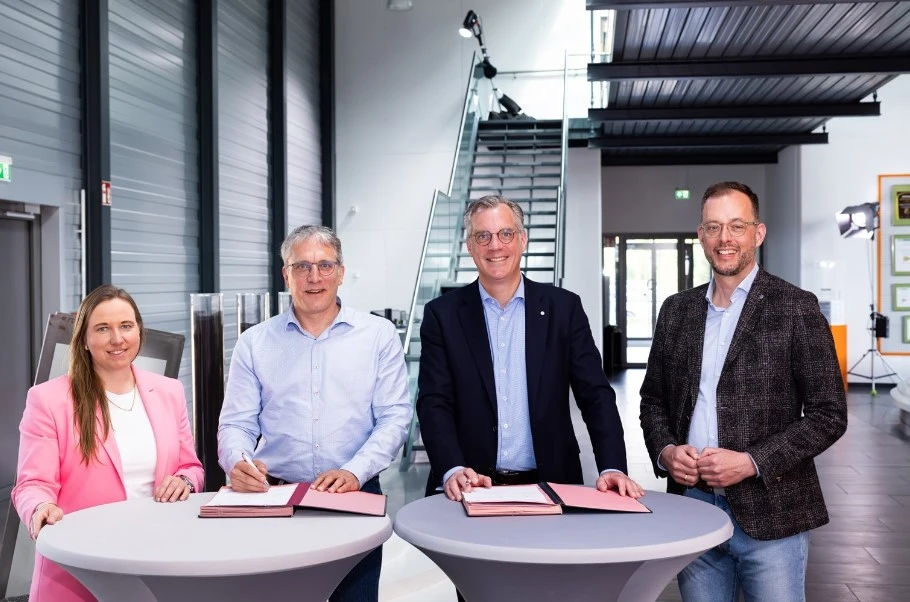
Salzgitter AG and Uniper SE signed a pre-contract on 23rd April 2024
Salzgitter AG and Uniper SE signed a pre-contract for the supply and purchase of green hydrogen. Under this contract, Uniper will supply 20,000 tons of green hydrogen produced to SALCOS® - Salzgitter every year from 2028 for the production of green steel. On May 13th 2024, the EU selected this project for the list of PCI (Projects of Common Interest) that support the goal of achieving a climate-neutral European Union by 2050. The Green Wilhelmshaven project is scheduled to be commissioned by 2028.
H2APEX's Lubmin Green Hydrogen Production Plant
H2APEX's Lubmin Green Hydrogen plant | 1 GW |
Project Developer | H2APEX |
Green Hydrogen Produced | 10,000 metric tons annually |
H2APEX's Lubmin Green Hydrogen plant is planned in multiple phases with a 1000 MW capacity. Initially, it is built with a 100 MW electrolyser that will supply 10,000 tons of hydrogen annually once it begins its operations from 2028.
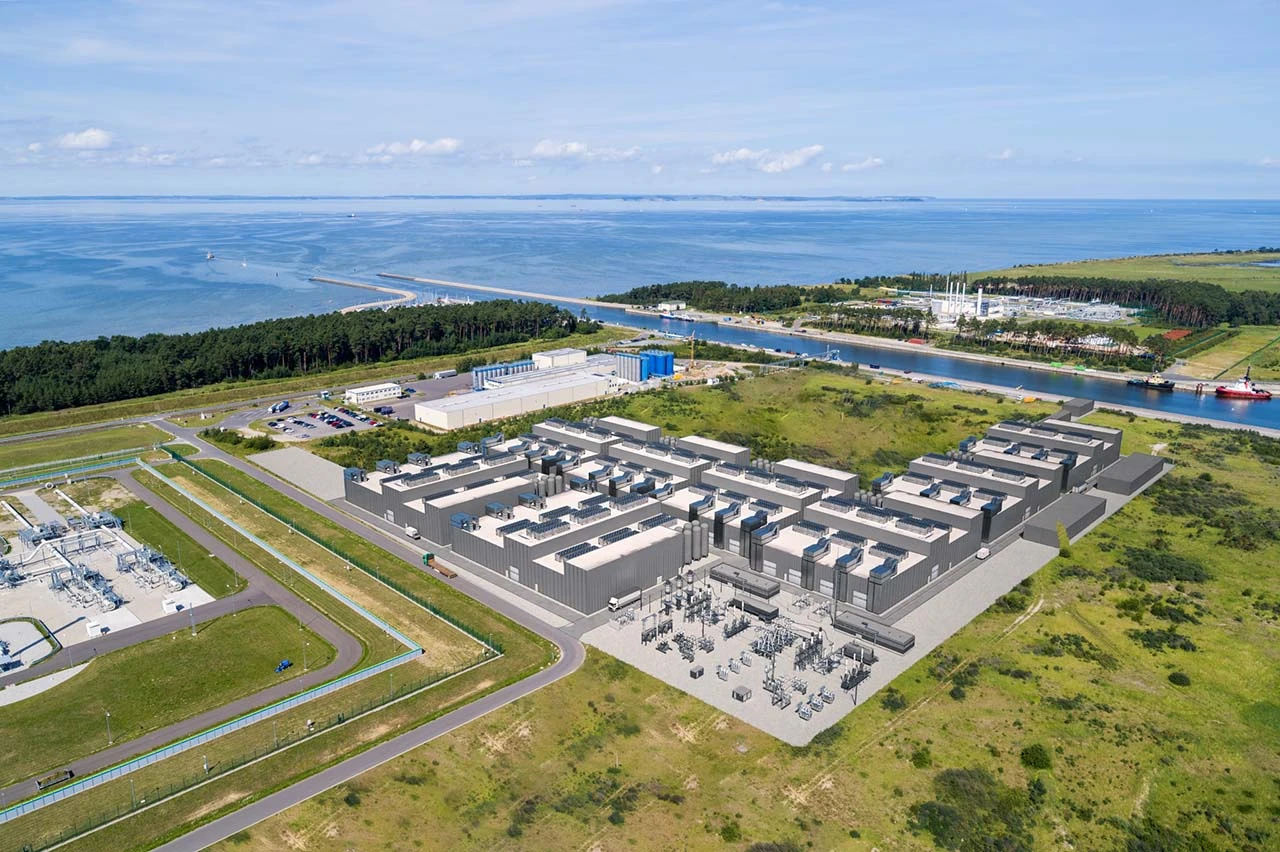
Later, the H2APEX intends to expand this built-out capacity to 600 MW at this same location in Mecklenburg-Vorpommern in Lubmin. This location is considered ideal for green hydrogen production due to the green wind energy from the offshore wind farms nearby, the transportation options via existing gas pipelines, and the existing infrastructure through the former Lubmin NPP.
Currently, in 2025, the project has been awarded to Apex Nova Holding, a wholly owned subsidiary of the H2Apex Group, on 1st July 2025. The project cost is estimated at USD 2,000 million.
Lhyfe's Lubmin Green Hydrogen Production Plant
Lhyfe's Lubmin Green Hydrogen Production Plant | 800 MW |
Project Developer | Lhyfe |
Green Hydrogen Produced | 330 metric tons annually |
Lhyfe announced an 800 MW green hydrogen project with an estimated project cost of USD 1,600 million. This project is being planned at Lubmin, eastern Germany, and is expected to be commissioned by 2029. This project is part of Lhyfe's development strategy, which is in line with the German core hydrogen pipeline network worth EUR 20 billion.
It is being built on the site of a decommissioned nuclear power plant. Once operational, the plant is set to produce up to 330 tons of green hydrogen per day.
HydrOxy Hub Walsum Project
HydrOxy Hub Walsum project | 520 MW |
Project Developer | Iqony |
Green Hydrogen Produced | 75,000 tonnes annually |
The HydrOxy Hub Walsum project is an upcoming green hydrogen project in the Duisburg-Walsum region. The project will include a total of 520 MW of electrolyzer capacity built in three phases. The first phase will operate with 157.2 MW capacity by 2027. To supply renewable energy, a wind park will be built in the North Sea; this renewable energy will be supplied to hydrogen production to produce 16-kilo tonnes of green hydrogen annually. The project is being developed by Iqony GmbH and Iqony Solutions GmbH.
The project is expected to achieve 113% of greenhouse gas (GHG) emissions. The project will begin its construction in 2026 and is expected to enter the first operation phase on 31st December 2027. The second and final phases will be commissioned by 2029 and 2031, and the project is expected to receive its financial close on 31st October 2025.

The HydrOxy Hub Walsum project is integrated with a battery system of 25 MW to reduce the degradation of the electrolyzer and to increase its efficiency and service time. The green hydrogen produced will be exported through the port of Duisburg and used in green steel production.
Additionally, the green hydrogen produced will be used in hydrogen filling stations for heavy-load transportation. The project is expected to decrease nearly 1.3 million tonnes of carbon dioxide during the first ten years of operation.
TES Green Energy Hub
The TES Green Energy hub planned in Wilhelmshaven, around an area of 145 hectares, will serve as a central hub for the distribution of e-NG (electric Natural Gas). The electrolyser plant is planned with a capacity of 500 MW electrolyzer capacity which is planned to reach a total capacity of 1 GW.
TES Green Energy Hub | 500 MW |
Project Developer | TES and EWE |
Green Hydrogen Produced | Yet to be Confirmed |
This green energy hub is being planned and developed by TES (Tree Energy Solutions). The green hydrogen produced in this hub will be converted to PtX (Power to X) e-NG. The green energy hub will be connected to the German natural gas grid to feed the e-NG into the grid. The green hydrogen converted into the e-NG can be converted back into the hydrogen on site in Wilhelmshaven.
The CO2 produced during the conversion process of e-NG to hydrogen will be captured and recycled for export or reuse during e-NG production. On 28th March 2024, the TES green hydrogen project received an exemption under German regulators to set its own tariffs for the import terminal in Wilhelmshaven. The green hydrogen project is heading towards FID (Final Investment Decision), facilitating the import of green gases.
Steag's Duisburg Green Hydrogen Production Plant
Steag's Duisburg Green Hydrogen Production Plant | 500 MW |
Project Developer | STEAG and ThyssenKrupp |
Green Hydrogen Produced | Yet to be confirmed |
STEAG and ThyssenKrupp are planning a green hydrogen hub with a capacity of up to 500 MW. The project cost is estimated at USD 1,000 million. The water electrolysis on the STEAG site in Duisburg-Walsum is based on electrolysis technology from ThyssenKrupp.
Both STEAG and ThyssenKrupp Uhde Chlorine Engineers are working in a joint venture on the feasibility study. This project includes the construction of two new pipelines to transport hydrogen and oxygen from Walsum to the steel mill less than three kilometres away.
The 15-hectare site in Duisburg-Walsum offers the possibility to erect electrolysis units with a total capacity of up to 500 MW. It also has a connection to the existing natural gas network, which in the future could also be used for the transport of hydrogen.
40+ reviews
Find the Latest Green Hydrogen Projects Across Germany
Gain exclusive access to our industry-leading database of green hydrogen project opportunities with detailed project timelines and stakeholder information.
Collect Your Free Leads Here!
No credit cardUp-to-date coverage
Joined by 750+ industry professionals last month
Deutsche ReGas's H2-Hub Lubmin Plant
Deutsche ReGas's H2-Hub Lubmin Plant | 500 MW |
Project Developer | Deutsche ReGas |
Green Hydrogen Produced | 30,000 tons of hydrogen annually |
Deutsche ReGas's H2-Hub Lubmin Plant is a large-scale electrolyser plant with a total capacity of 500 MW. This "Lubmin H2 Import Terminal" will be the world's first floating import terminal that can convert green ammonia to green hydrogen. This terminal, once operational, will produce approximately 30,000 tons of hydrogen per year.
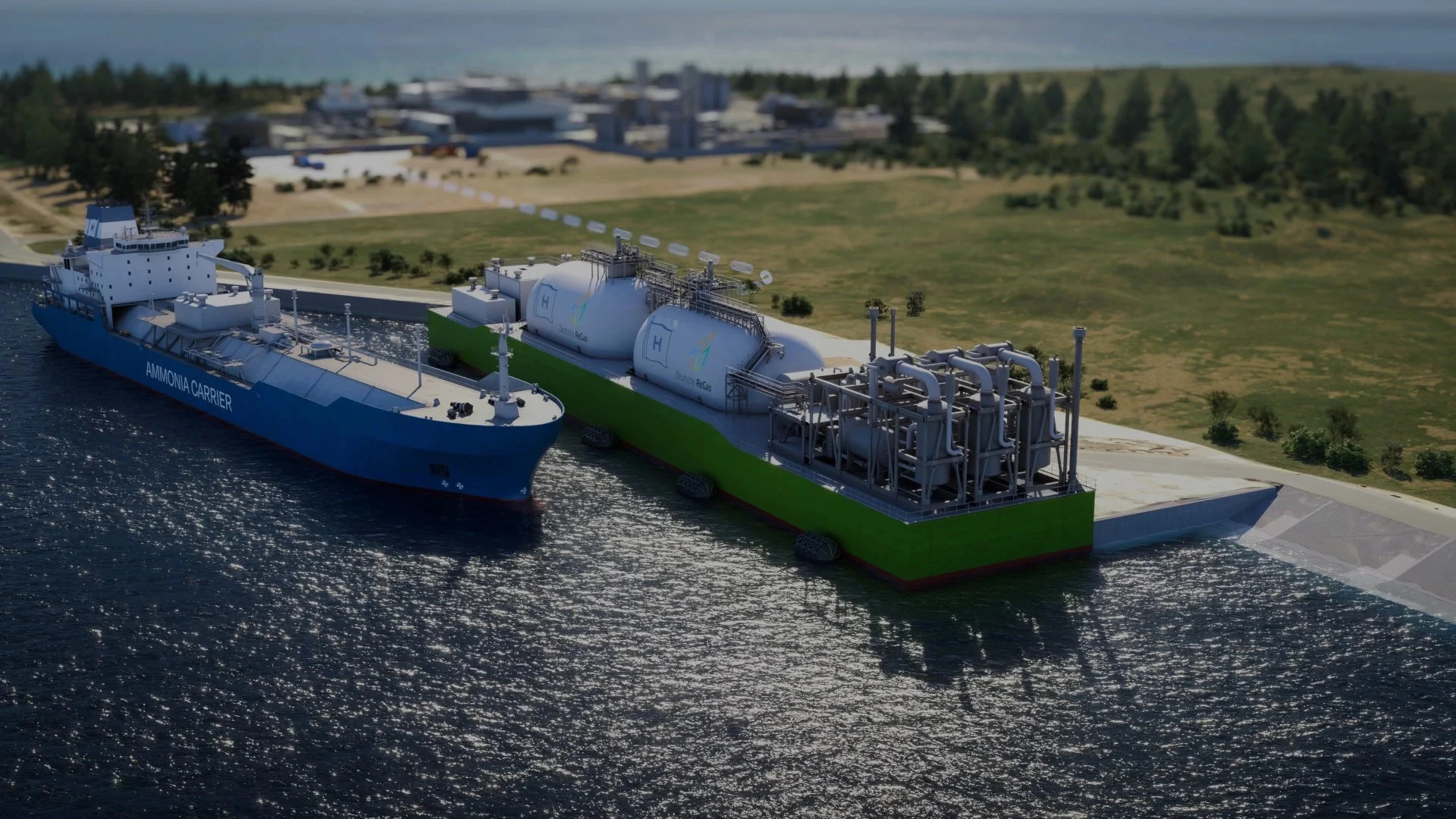
The project is being planned in two phases: phase 1 with a 200 MW capacity that will be operational by the end of 2026, and 300 MW capacity in phase 2 that will be operational by 2028.
In September 2024, Deutsche ReGas announced it had completed the FEED phase for its planned hydrogen hub in Lubmin. The project began back in 2022, and Deutsche ReGas acquired the land for this project. On 27th May 2025, Deutsche ReGas received funding of EUR 112 million (USD 1000 million estimated) worth of public grants from the European Union's Hydrogen Bank.
GET H2 Nukleus Project
GET H2 Nukleus Project | 300 MW |
Project Developer | BP p.l.c, Evonik, Nowega, OGE and RWE |
Green Hydrogen Produced | 49,056 tonnes annually (estimated) |
The GET H2 Nukleus project is a 300 MW project that is planned on the site of the Emsland gas-fired power plant by BP p.l.c, Evonik, Nowega, OGE and RWE. It is planned in three stages, with the first 100 MW electrolyzer capacity is planned by 2025 and the completion of three phases is planned by 2027.
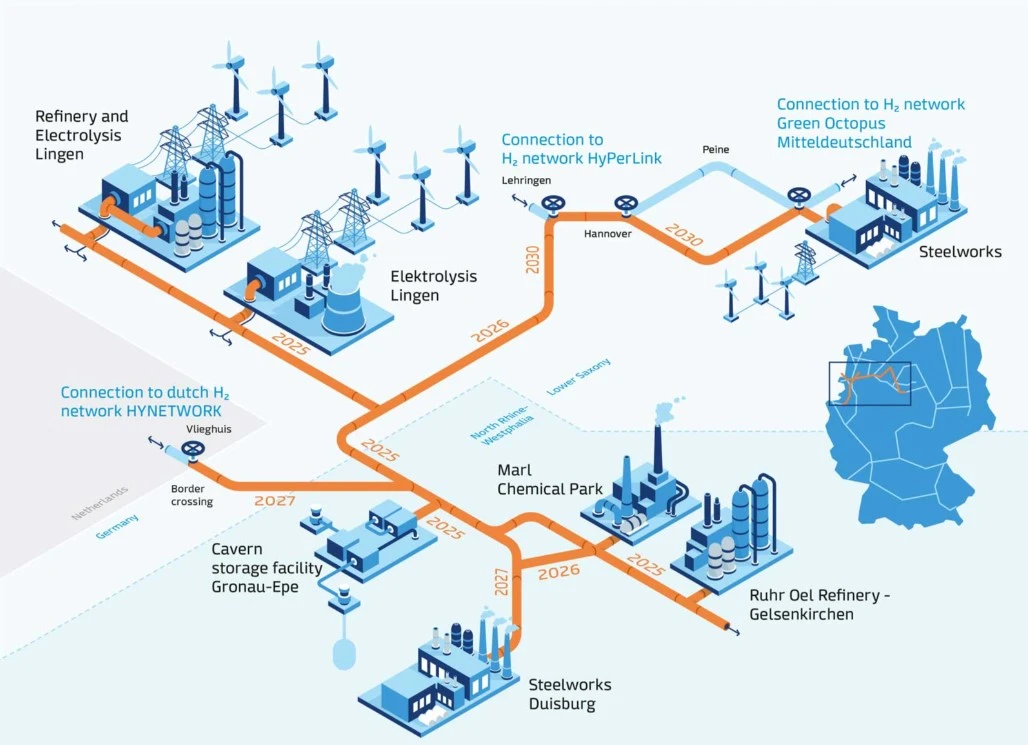
Project Layout
RWE will supply a 300 MW electrolyzer capacity for this project. The first 100 MW electrolyzer is to be built at the Lingen power plant site of RWE, which will be commissioned by 2025. A 130-kilometer long gas pipeline will be converted to 100% hydrogen pipeline through the network operators Nowega and OGE. This main pipeline in the Lingen will be connected to the newly built pipeline towards the Ruhr region.
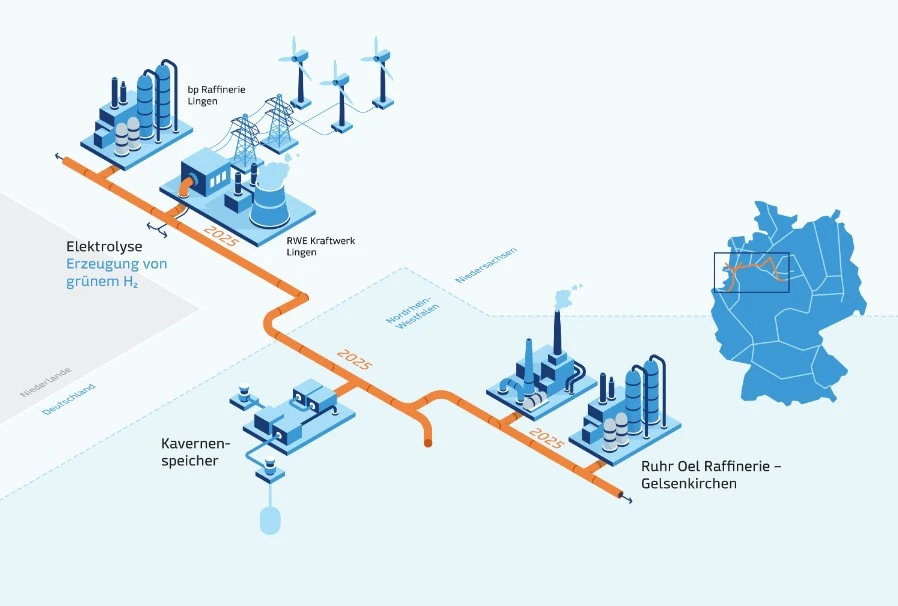
Evonik is constructing a new building between Marl Chemical Park and the BP p.l.c. Ruhr Oel refinery in Gelsenkirchen, connecting it to the main network pipeline. Nowega and OGE will also connect RWE Gas Storage West in Gronau-Epe to the main network pipeline. The GET H2 Nukleus project will supply green hydrogen to industrial customers in Lower Saxony and North Rhine-Westphalia. The project aims to expand its green hydrogen supply to the Netherlands.
BP p.l.c’s Lingen Green Hydrogen Project
BP p.l.c’s Lingen Green Hydrogen project | 100 MW |
Project Developer | BP p.l.c |
Green Hydrogen Produced | 11,000 tonnes annually |
The Lingen green hydrogen project is planned as a potential supply source for industrial customers in nearby regions and to BP p.l.c’s Lingen refinery. BP's Lingen refinery is one of the largest sources of energy in the German industry. This green hydrogen project will help decarbonize the German industry and prove to be a cleaner source of energy.
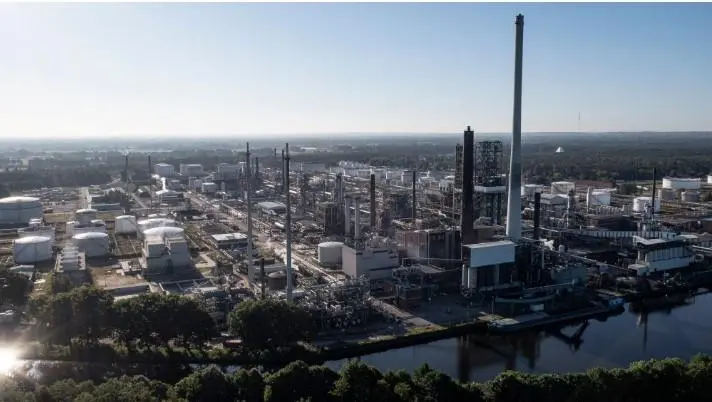
On 15th July 2024, bp’s Lingen green hydrogen project received funding from BMWK (Federal Ministry for Economic Affairs and Climate Action) and the Lower Saxony government. This funding is allocated as part of the European IPCEI (Important Projects of Common European Interest) Hy2Infra wave.
The project was launched on 10th November 2020 as a partnership between bp and Ørsted to replace 20% of the natural gas-based grey hydrogen at BP’s Lingen refinery. A LOI (Letter of Intent) was signed by BP p.l.c and Ørsted. Initially, it was planned with a 50 MW electrolyzer capacity that was expected to produce 9,000 tonnes annually.
In line with German and EU hydrogen strategies, the project electrolyzer capacity was expanded to 100 MW, which will produce an average of 10-11 kt (Kiloton) of green hydrogen annually. The renewable energy for the electrolyzer will be supplied from offshore wind through a PPA (Power Purchase Agreement).
Conclusion
Germany’s green hydrogen market is seeing a surge with large-scale upcoming projects under Energiewende - Germany’s energy transition plan. Backed by EU’s hydrogen policy, large hydrogen projects like NortH2, the Green Wilhelmshaven project, and BP’s Lingen green hydrogen project it contribute to Germany’s green hydrogen objectives. Thus, Germany continues to strive in the global green hydrogen market.
Get exclusive details about Germany’s upcoming green hydrogen projects!
Want to find an overview of Germany’s green hydrogen projects?
Subscribe to Germany’s green hydrogen projects database and unlock access to:
Announced, planning, and FEED Stage projects
Upcoming, Ongoing, and Completed Projects List
Timely updates on tenders and new developments
Access to key stakeholders and decision-makers
Market insights and future trend analysis by experts
Stay ahead with timely updates and developments in the US’s green hydrogen industry by subscribing to Blackridge’s Germany’s green hydrogen projects database!
Why Blackridge’s Global Projects Tracker?
Blackridge’s Global Projects Tracker covers projects from 150 countries and is updated with real-time, accurate, and authentic project developments. By subscribing to Germany’s green hydrogen projects database, you can get access to key contact details of ongoing and upcoming projects, project timelines and overviews, and regular alerts on project developments, all served to you through an easy-to-use interface.






Leave a Comment
We love hearing from our readers and value your feedback. If you have any questions or comments about our content, feel free to leave a comment below.
We read every comment and do our best to respond to them all.